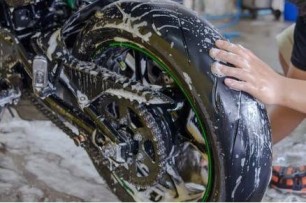General Insurance Blogs, Articles & Updates by - Magma HDI
Have us call you
- RENEW YOUR POLICY
- BUY NEW POLICY

Work From Home (WFH) culture: Revealing the truth
The year 2020 was considered the year of WFH (work from home). In the beginning, everyone took it as a blessing, and people experienced enough flexibility at work and more time for family. However, as the trend continued into 2021, it presented new communication and collaboration challenges among teams, mental health issues, and imbalance in the work-life cycle.
Working from home looks like a job incentive for many employees, as suddenly they have more flexibility to get their work-life balance. But that's not the whole truth; reality seems to be different. Work from home culture has depended significantly on one question: Is remote working a sustainable option? In this article, we'll discuss some of the most common challenges that home-based workers are facing.
WFH affects your mental health:
Though work from home has proved to be helpful, it is also adversely affecting our mental health. A report states that about 76% of the global workforce recorded negative impacts on their mental health in 2020 due to WFH.
WFH results in total exposure to the computer all day, leading to headaches, fatigue, tiredness, and eye problems. In addition, rather than the benefits of work-life balance, some people lose sleep due to workload and family chores altogether. This continuous work-family adjustment results in emotional exhaustion. People who are hyperactive at work find it hard to detach themselves from work at home.
On the other hand, work from home has turned out to be an advantage for many introverts. You can work from the convenience of your customary conditions without any physical human interaction.
WFH takes a toll on physical health:
Because you are in front of the screens all day, there is no time for physical activities. Due to prolonged remote working hours, people are more often facing health issues. A sedentary lifestyle, irregular food intake, and sleep deprivation are common concerns. Parents working full time, taking care of household chores, and home-schooling their kids face much bigger physical health issues.
Tossing within the many tasks simultaneously; it takes the life out of those employees with productivity shame, lack of motivation and burnouts in most cases. Most surveys suggest that as many as 50% of people have back and neck pain and other musculoskeletal problems leading to more stress. Although the pandemic has blurred the boundaries between work and home, we learned a lot from WFH culture. These alarming health-related issues have brought well-being to the forefront. Both employers and workers are more aware than ever of the impact of mental and physical health.
We all know that stress and fatigue are not just resulting in some temporary problems but are also impacting cognitive health with some life-threatening issues such as anxiety, diabetes, heart diseases, and clinical depression. As a result, the corporate sector is taking measures to ensure the well-being of the employees and assuring better working conditions, flexibility and HEALTH INSURANCE coverage to their employees.
Since WFH impacts your overall well-being, re-think your current remote working style. There are undeniable benefits of work from home if you have a positive WFH culture, flexibility, work-home balance, time for other activities and a health insurance plan to address your mental and financial stress. So go, set in motion the true meaning of WFH!
To get the best deals on health insurance, click HERE .
Disclaimer: The information provided above is for illustrative purposes only. To get more details, please refer to policy wordings and prospectus before purchasing a policy.

Here's a guide to help you start your bike rental business
'Big business starts small' – wise words by Richard Branson. If you plan to become your boss, a bike rental business can be a good venture. A rental bike allows people to ditch cars and public transport without owning a motorcycle or being bothered by BIKE INSURANCE, storage, and maintenance hassles.
In recent years, the opportunities and demands for a bike rental business have increased considerably due to the convenience of two-wheelers. With just a helmet and a 2-wheeler, a person can go around the city efficiently running their errands; or take in some fresh air on an empty highway.
Now that you are ready with your business idea let's proceed to the next step. We have brought together these seven easy steps to help you start your bike rental business.
Step 1
Plan – 'A target to accomplish without a plan is just a dream!'
• Estimation of setting up your business
• The business operation cost
• Potential customers (set up the target audience and promotion offer accordingly)
• Method of business (hourly or daily rates, whether or not you will sell bike-related merchandise, policies concerning damage caused, etc.)
• More profits (consider extra services, like bike sales and repairs; if in a tourist place, offer tour guides)
• Name of your business (what's there in the name? Your brand, logo, website, etc.)
Step 2
Tax – 'Pay for doing the right thing!'
Register for taxes; your small business will be taxed depending upon your business structure (e.g., LLC or Sole Proprietorship.)
Step 3
Bank accounts and credit cards – 'Start your financial journey!'
A business bank account separates your assets from your company's assets. Similarly, getting a business credit card will help you separate your business and personal expenses, and it builds your company's credit history, allowing you to acquire your investments later.
Step 4
Daily cash flow and expenses – 'Maintain a proper business account!'
Keeping track of various expenses and income is crucial to understand financial performance. It also simplifies the tax filing for you. Carefully manage the cash flow, make all entries and maintain a daily account sheet.
Step 5
Legal requirements – ‘Keep the books clean!’
Get your company’s name registered, obtain GST, PAN card, trademark certificate, and other prerequisite licenses and permits to avoid any fines or legal issues in the future.
Step 6
Insurance – 'Keep your umbrellas ready before it rains!'
Similarly, for your firm's financial security, it is necessary to get the right business insurance. There are several types of insurance policies designed to cover different risks. For the growth of a bike rental business, the security of bikes makes a huge difference. With the rising operation cost of the bike rental business, having robust bike insurance plans helps you overcome financial risks related to your bikes.
Step 7
Move online – 'Make the internet your new market!'
Maintaining a good website and the social media platforms like LinkedIn, Facebook and Instagram will help your business to grow with more user engagement. In addition, you can flash special offers, exclusive deals, trade merchandise as a part of your marketing strategy to draw more sales.
For running a bike rental business, you need to have mechanical skills or hire at least one full-time mechanic. Remember, a nonoperating bike won't earn you any money. Also, a significant amount of your customers can be tourists, so you should be well acquainted with the location to build a good customer relationship. Follow your passion and work in the direction of making your vision a reality with this quick guide.
Are you starting a new bike rental business? Click HERE to buy insurance that will ensure the safety of your bikes.
Disclaimer: The information provided above is for illustrative purposes only. To get more details, please refer to policy wordings and prospectus before purchasing a policy.

Eleven good habits every two-wheeler rider should follow
The two-wheeler segment is considered the most convenient mode of commutation in our country. It is believed that 'life is better on two wheels.' With a couple of benefits like fuel efficiency, compact design, and budget-friendliness, two-wheelers are people's personal favourite to withstand the fast pace of life. From youths to retirees, you will find a large Indian population riding two-wheelers.
Despite many worthy features, two-wheelers elevate the risk involved in riding them. No matter how good your driving skills are, you can't deny the risks involved with two-wheelers. Unfortunately, people tend to overlook it while riding two-wheelers. Following traffic and safety rules is essential even if you have many years of experience under your belt. In addition, pursue another good habit of renewing your 2 WHEELER INSURANCE to ensure security in case of mishaps.
We bring these eleven good habits every rider should consider:
1. Start your two-wheeler only after wearing the helmet. It is unlawful and dangerous to ride a two-wheeler or a bike without wearing a proper helmet. The helmet should be ISI certified and of the best fit.
2. Always go for a bike that you can comfortably ride and control. Choose one that is appropriate for your physical capabilities, low maintenance, and compliments your budget.
3. Overtaking a vehicle from the left is always the wrong decision you'd ever make. Stay away from overtaking at intersections, schools and public zones, bridges. Honk before you take a turn.
4. The rider must be visible to other vehicles during the night and extreme weather conditions like fog. Stick reflective bands on the helmet, use dipper lights appropriately, especially when riding at night.
5. Riders must be cautious of their proximity to the vehicles ahead of them. Understand the distance required to go to a complete halt and brake correspondingly.
6. Maintain your motorcycle or scooter in excellent working condition and get regular servicing at an authorized workshop or service centre.
7. Always look out and be aware of potential dangers such as speed bumps, potholes, environmental disasters, and pedestrian crosswalks.
8. Obey all traffic rules religiously. Always signal first so that others can anticipate your next action. Make sure you don't slam on the brakes or make sharp bends suddenly.
9. Using your phone on the bike is a big threat for the rider and the pillion rider. If it is exceptionally urgent, pull over your bike at the side of the road to use your phone.
10. Only because you own a vehicle does not make you superior on the road. Be considerate of pedestrians and allow them to move before you in all situations.
11. In addition, an overall increase in service cost, maintenance fee, or a sudden accident may impact your financial plan. So, prepare for uncertainties in advance with 2 wheeler insurance.
2 wheeler insurance will not just cover your finances at times of damage but will also provide you with compensation if your two-wheeler is stolen.
Keep the above-mentioned habits in mind and enjoy the pleasure of a bike ride to chase more smiles per hour.
Looking for 2 wheeler insurance, click HERE.
Disclaimer: The information provided above is for illustrative purposes only. To get more details, please refer to policy wordings and prospectus before purchasing a policy.

With these five tips, you can give your bike tyres a long life
Bikes are the most commonly used vehicle when it comes to riding on India's busy roads. But did you know that your safety relies on one more thing than just your driving skills? Your choice of tyres and how you maintain them are two major factors contributing to a safe and smooth ride.
Still, most of us don't take the health of our bike's tyres very seriously. Tyres suffer a lot while making your riding experience pleasant. Besides this, bike tyres face significant external damage and develop cracks due to constant wear and tear. You cannot afford to leave the tyres unattended because a faulty tyre can be a threat to your life and others around you. Below are the five best tips to increase the life expectancy of your bike's tyres.
1. Wash them regularly:
Cleaning the tyres of your bike is an essential routine that you shouldn't miss. Leaving dirt will expose them to damages, thereby affecting their quality. The dirt racks up on the tyre's surface and affects its grip, which tends the bike to skid on the road. So, next time you go to the washing centre, get the tyres clean and dirt-free thoroughly.
2. Schedule regular repair checks:
Your bike runs over any sharp object like a nail or edgy stones on the road. With time, tyres also meet with alignment and wheel balancing issues. This happens due to extensive riding and wear and tear of treads or grooves. Get these issues fixed at the earliest, as otherwise, such things can damage the tyres inside out.
3. Get the best fit:
Sometimes we opt for fancy or trendy tyres and don't pay heed to the actual requirement. Always look out for the best fitting and necessity of your bike and its model. Mismatching tyres is never a good option – neither for your bike nor for you.
4. Timely replacement of tyres:
Tyres don't come with a lifelong guarantee. Ideally, they need to be changed every 4-5 years, or the kilometres you cover, depending on your bike's specifications. Due to resisting the friction continuously, tyres tend to lose their grip. Taking out your motorcycle with such tyres on the road is dangerous, especially on uneven roads or during the rainy season. So, timely replacing of tyres is required before the situation gets uncontrollable.
5. Check for ideal pressure:
Refer to the user manual of your bike to know the perfect pressure of the tyre and maintain it consistently. Don't forget the essential maintenance of air filling and oiling the engine. Riding under less pressured tyres is risky as there are chances of bursting or unexpected puncturing.
Your bike is your responsibility, and keeping it in good shape will give it an extended life. Moreover, regular maintenance to your bike and tyres promises comfortable and safe rides to you. Along with good care, buying suitable BIKE INSURANCE also counts as a wise step. Bike insurance comes with plenty of benefits that can help you as an owner during unfortunate incidents like accidents, theft, or damages due to calamities.
Click HERE to buy or renew your bike insurance online.
Disclaimer: The information provided above is for illustrative purposes only. To get more details, please refer to policy wordings and prospectus before purchasing a policy.


